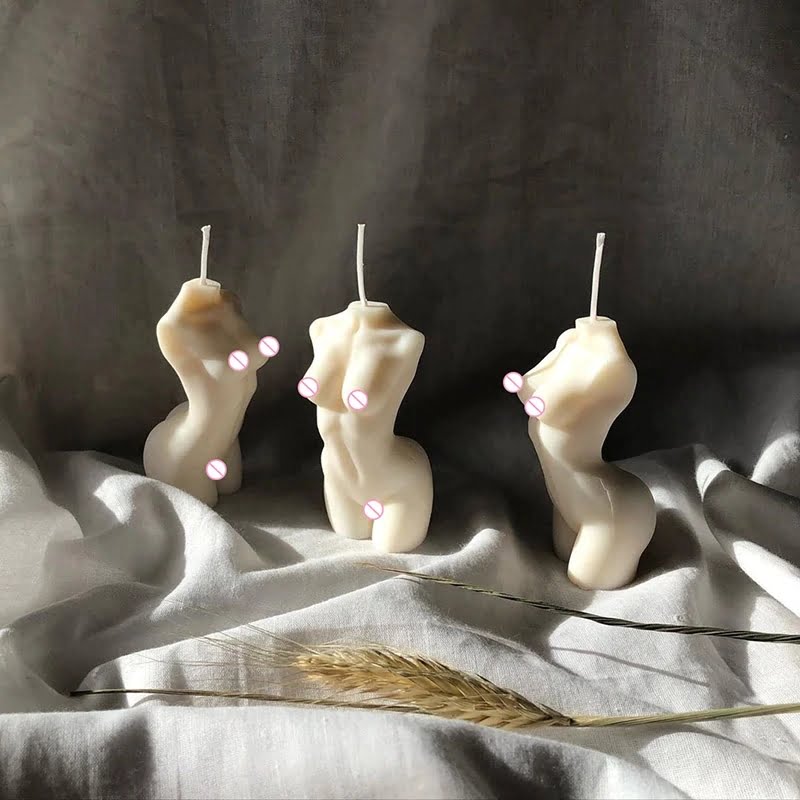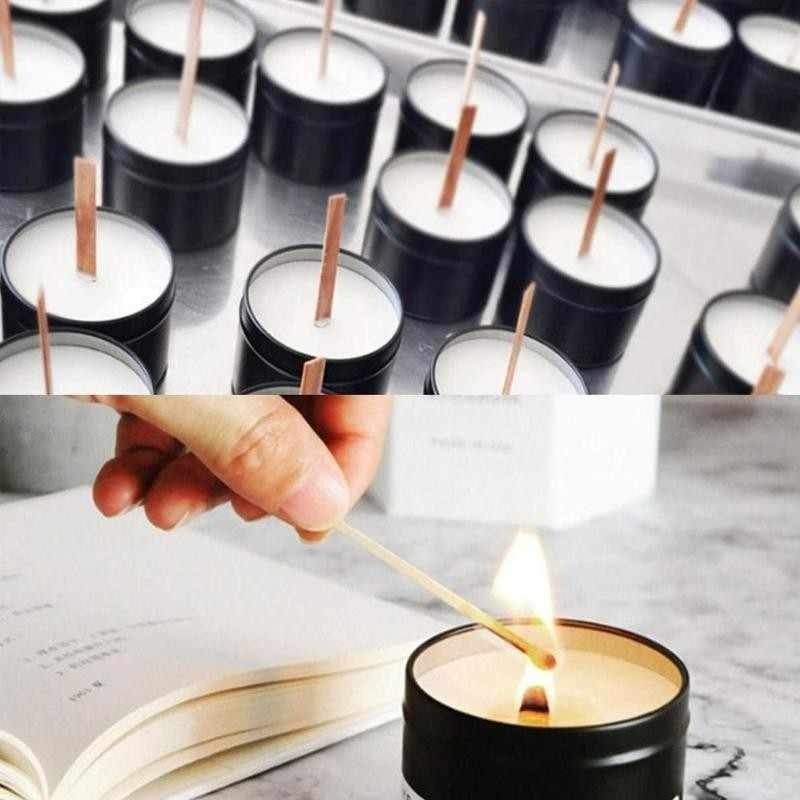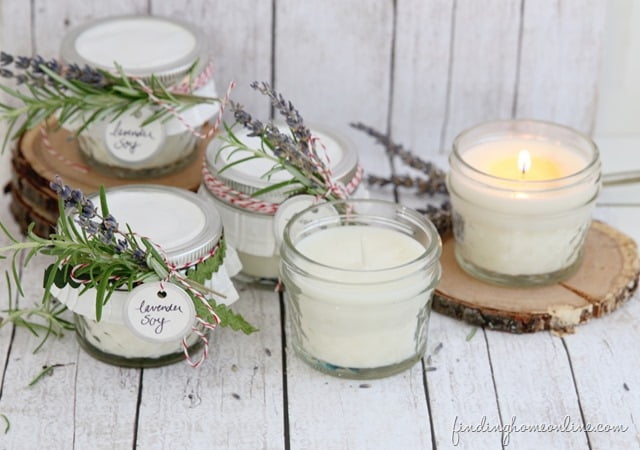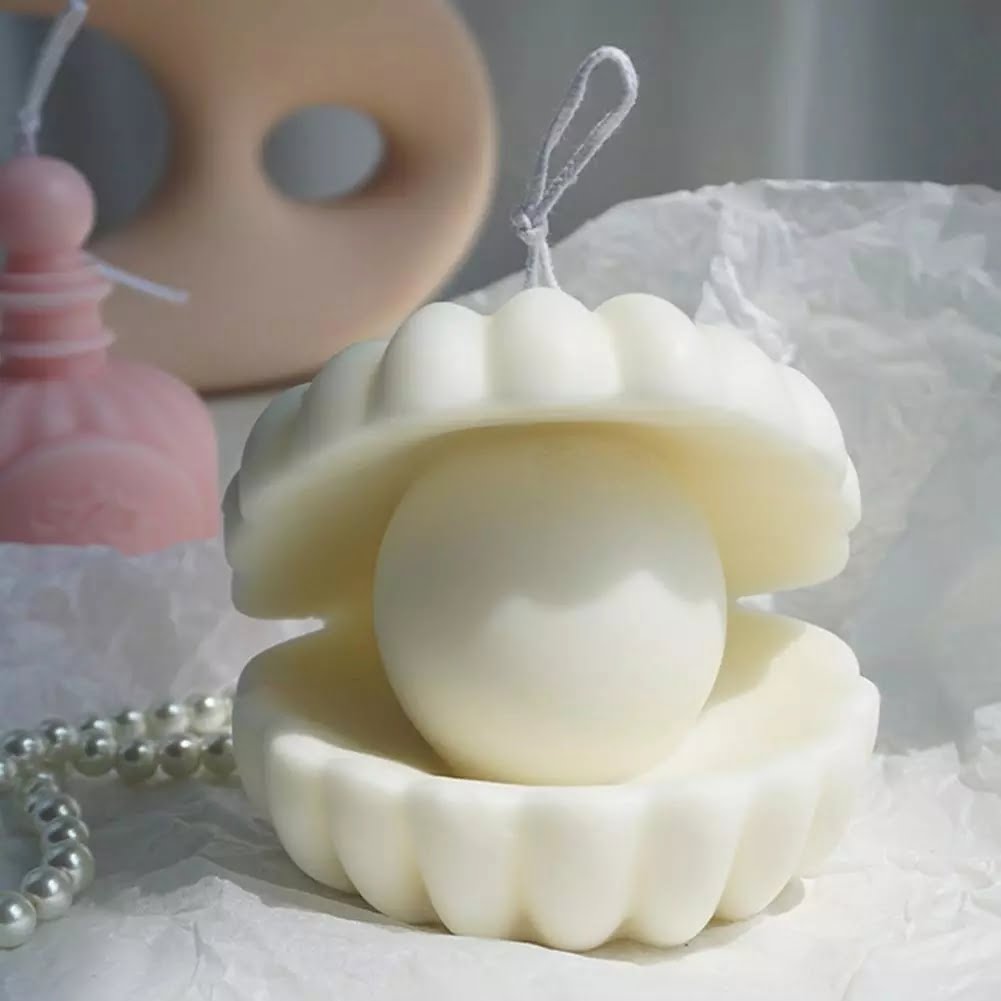Colonial Day Candle Making is a captivating craft that allows us to step back in time and experience the artistry and skill of candle making during colonial times. Colonial Day, a celebration of our early American history, provides an opportunity to immerse ourselves in the rich traditions of the past and gain a deeper understanding of the lives of our ancestors.
One significant aspect of colonial life was the production of candles, which played a crucial role in providing light before the advent of electricity.
In this article, we will delve into the fascinating world of candle making during colonial times. We will explore the historical context behind this important craft, shedding light on its significance within colonial society. With electricity not yet available, candles were a vital source of light for households and played numerous roles in everyday life.
We will also uncover the materials and tools used by candle makers during those times. From exploring the different types of waxes commonly used to understanding their availability, we will discover how these ingredients formed the foundation for creating exquisite candles.
Stay tuned as we guide you through a step-by-step process on how to make candles following traditional colonial techniques. From melting the wax to shaping and decorating the candles, we will provide you with detailed instructions on crafting your own pieces steeped in history.
Whether you are an avid candle enthusiast or simply curious about historical crafts, this article will illuminate your knowledge and inspire you to embark on your own journey into colonial day candle making.
Join us as we celebrate Colonial Day Candle Making-a craft that not only kindles fascination but also connects us with our heritage. Together, let’s explore this remarkable art form that has stood the test of time and continues to shine brightly today.
Historical Context
During colonial times, candles played a crucial role in society due to the absence of electricity. The art of candle making was an essential skill for colonial households, as it provided light for various activities and served as a source of warmth on cold nights. Exploring the historical context of candle making during this time period unveils the importance and significance of this craft.
The Role of Candles in Colonial Society
In colonial society, candles were a necessity rather than a luxury. With limited access to natural light after sunset, candles were relied upon for many daily tasks such as reading, cooking, and sewing. They also provided illumination during religious services and social gatherings, helping to foster community and bring people together. Moreover, candles were used as a means of telling time and signaling important events.
It is important to note that the quality and quantity of candles in a household often reflected one’s social status. Wealthier families could afford better-quality candles made from beeswax or bayberry wax, which produced less smoke and had a pleasant aroma when burned. On the other hand, poorer households would often use tallow candles made from animal fat, which emitted an unpleasant odor when lit.
The Essential Skill of Candle Making
Given the significance of candles in colonial society, candle making became an essential skill for most households. With no commercial production or easy access to pre-made candles, colonial settlers had to rely on their own abilities to provide lighting for their homes. Candle making was primarily undertaken by women in the household as part of their domestic responsibilities.
The process involved rendering animal fat or collecting beeswax or bayberries to create the base material for candles. These materials were then melted down and poured into molds or dipped repeatedly into melted wax until they reached the desired thickness. The wicks used were typically made from cotton fibers or twisted strands of linen thread.
Candle making required patience, skill, and attention to detail. The ability to produce long-lasting, clean-burning candles was highly valued. Thus, candle making not only served a practical purpose but also became a reflection of the maker’s abilities and resourcefulness.
Materials and Tools
To successfully make candles the colonial way, it is essential to have a thorough understanding of the materials and tools used during that time period. In this section, we will explore the primary ingredients used for candle making in colonial times as well as the different types of waxes that were commonly utilized.
The primary ingredient for candle making during the colonial era was beeswax. Beeswax candles were highly valued for their long burning time and pleasant aroma. However, beeswax was relatively expensive and not easily available to everyone, making it a luxury item mainly used by wealthier households or for special occasions.
For those who couldn’t afford beeswax, tallow was the most common alternative. Tallow candles were made from animal fat, typically from beef or sheep. Although they didn’t burn as efficiently or emit a pleasant fragrance like beeswax candles did, tallow candles provided an affordable lighting option for everyday use.
In terms of tools, colonial candle makers relied on basic equipment to craft their candles. A pot or cauldron was used to melt the wax or tallow over an open fire.
Long-handled stirring sticks made from wood or metal were essential for thoroughly mixing the melted wax and ensuring an even distribution of fragrance or color if desired. Additionally, molds made from material such as metal or tin were used to shape the candles into various forms such as pillars or tapers.
Overall, acquiring the necessary materials and tools played a crucial role in candle making during colonial times. Whether using prized beeswax or more readily available tallow, colonial households found ways to create light sources using what they had access to. Understanding these historical materials and tools allows us to appreciate the resourcefulness and ingenuity of our ancestors in illuminating their homes through their homemade candles.
- Beeswax: Valued for its long burning time and pleasant aroma
- Tallow: Common alternative made from animal fat for everyday use
- Pot or cauldron: Used to melt the wax or tallow
- Stirring stick: Ensured even mixing of melted wax and added fragrance/color
- Molds: Shaped candles into various forms such as pillars or tapers
Step-by-Step Process
Candle making during colonial times was an intricate process that required patience, precision, and a careful adherence to specific steps. Whether you are interested in recreating this historical craft or simply curious about the art of candle making, here is a step-by-step guide to help you shine a light on the candle making technique of yesteryears.
- Gather Your Materials: Before you start making candles, gather all the necessary materials and tools. You will need wax (such as beeswax or tallow), wicks, a double boiler or melting pot, a thermometer, molds or containers for shaping the candles, fragrance or color additives (if desired), and scissors.
- Melt the Wax: Begin the candle-making process by melting your chosen wax in a double boiler or melting pot. Slowly heat the wax until it reaches its melting point. The temperature will vary depending on the type of wax you are using, so it is essential to follow specific guidelines provided with your chosen wax.
- Add Fragrance or Color: If desired, now is the time to add fragrance oils or color additives to your melted wax. Be sure to stir well to distribute these elements evenly throughout the mixture.
- Prepare the Molds: While waiting for your scented or colored wax to cool slightly (but not solidify), prepare your molds by lining them with pre-cut wicks. Ensure that there is enough excess wick at the top of each mold to allow for easy lighting later.
- Pour and Set: Carefully pour your melted wax into each prepared mold until they are filled to your desired level. Leave some space at the top for any expansion that might occur during cooling. Allow the candles to cool and solidify completely, which may take several hours.
- Remove from Molds: Once your candles have thoroughly cooled and hardened, gently remove them from the molds. Trim the excess wick to about a quarter of an inch above the surface of the candle.
- Set and Light: Place your finished colonial-style candles on a fireproof surface, such as a candle holder or decorative tray, and light them using a match or lighter. Enjoy the warm glow and fragrant ambiance that emanates from these handmade creations.
Making candles using traditional methods is a truly rewarding experience that immerses you in the historical craft of colonial candle making. It allows you to appreciate both the artistry involved and the practicality of this skill in early American households. So why not gather your materials, follow these step-by-step instructions, and embark on a journey into yesteryears?
Colonial Candle Making Techniques
Colonial candle making techniques were not only practical but also a form of art. In colonial times, candles were essential for providing light after dark, as there was no electricity. The process of making candles involved various traditional techniques and methods that added a touch of creativity to the craft.
Hand-Dipped Candles: A Laborious yet Intriguing Process
One of the most common colonial candle making techniques was hand-dipping. This method involved repeatedly dipping a wick into melted wax to build up layers and create a solid candle. Each layer had to cool and harden before adding the next one, making it a labor-intensive process. Hand-dipped candles were known for their long burn time and graceful tapered shape. The technique required skill, patience, and precision to achieve candles with consistent thickness.
Molding Techniques: Creating Unique Candle Shapes
Molding was another popular technique in colonial candle making. It allowed artisans to create candles in various shapes and sizes by pouring melted wax into molds. These molds were often made from materials like wood, metal, or clay. Once the wax had cooled and solidified, the mold could be removed, leaving behind a perfectly shaped candle. Molding techniques opened up possibilities for intricate designs and decorative details on the finished candles.
The Art of Decorating Candles: Personalizing Illumination
In addition to the technical processes of hand-dipping and molding, decorating played a significant role in colonial candle making. Artisans would use tools such as carving knives or hot metal wires to create intricate patterns on the surface of the candles. These designs could range from simple lines and swirls to more elaborate motifs inspired by nature or traditional symbols. The finishing touches included adding color with dyes or painting delicate designs using pigments mixed with melted wax.
Overall, colonial candle making techniques offered an opportunity for artisans to express their creativity while providing a practical source of light. These techniques, along with the use of hand-dipped candles, molding, and intricate decorations, captured the essence of an era where simplicity met artistry. Today, candle makers continue to draw inspiration from these traditional methods while incorporating modern innovations to create a wide variety of candles that honor colonial craftsmanship.
Colonial Candle Designs
Candle making during colonial times was not only a necessity but also an opportunity for creativity. Colonial households put great emphasis on the aesthetic appeal of their candles, and various designs were popular during that era. Tapered candles, pillar candles, and container candles were some of the most common designs used in colonial households.
Tapered candles were one of the most popular candle designs during colonial times. These long, slender candles provided a soft and elegant light, making them a favorite choice for formal occasions and religious ceremonies. The process of making tapered candles involved dipping cotton wicks repeatedly into melted wax until the desired thickness was achieved. This resulted in candles that gradually tapered towards the top, creating a visually appealing shape.
Pillar candles were another popular design during colonial times. These cylinder-shaped candles were often used as decorative pieces and served as both a source of light and a symbol of status within the household. Pillar candles were usually made by pouring melted wax into molds and allowing it to harden. They could be fragranced or colored to add an extra touch of elegance.
Container candles, also known as jar or tin can candles, were commonly used in colonial homes for their practicality and convenience. These candles were made by pouring melted wax into containers such as ceramic jars or metal cans that would hold the wax as it solidified. The containers not only provided stability but also protected the flame from drafts, making these candles ideal for outdoor use.
| Design | Description |
|---|---|
| Tapered Candles | Long and slender with a gradual taper towards the top; elegant and often used for formal occasions. |
| Pillar Candles | Cylinder-shaped candles often used as decorative pieces; symbol of status within the household. |
| Container Candles | Made by pouring melted wax into containers such as jars or cans; practical and convenient for outdoor use. |
Modern Adaptations
As time has passed and technology has advanced, the art of candle making has also evolved to incorporate modern techniques and innovations while still preserving the traditions of colonial times. Modern adaptations in candle making have allowed for more efficient methods and a wider variety of options for candle enthusiasts.
One significant modern adaptation in candle making is the use of machinery and automation. In colonial times, all candles were made by hand, requiring a great deal of time and effort. Today, sophisticated machines have been developed that can handle the labor-intensive tasks of melting wax, pouring it into molds, and even adding fragrance or color. This advancement has not only increased efficiency but also made candle making accessible to more people.
In addition to machinery, advancements in materials have also played a role in modern adaptations of colonial day candle making. While beeswax was predominantly used during colonial times, today there are a wide variety of waxes available for candle makers.
Soy wax, for example, is a popular alternative that is renewable, environmentally friendly, and produces less soot when burned. Candle makers also have access to an array of fragrances and dyes that allow them to personalize their creations according to their own preferences and creative vision.
Furthermore, the internet has revolutionized the way people learn about and engage with traditional crafts like colonial day candle making. Online platforms now offer tutorials, classes, and forums where individuals can connect with like-minded enthusiasts from around the world. This accessibility allows for knowledge-sharing on techniques and helps foster a sense of community among those interested in this age-old craft.
Overall, modern adaptations in candle making have provided new possibilities while still honoring the historical traditions of colonial days. These innovations have made it easier for anyone interested in this ancient craft to get involved and create their own unique candles. Whether you prefer traditional methods or enjoy experimenting with new techniques, there are endless opportunities to blend the past with the present when it comes to Colonial Day Candle Making.
Colonial Day Candle Making Events
Colonial day candle making events provide a unique opportunity for individuals to experience the craft firsthand and immerse themselves in the rich history of candle making during colonial times. These events are often held annually and offer a range of activities that showcase the art of candle making, allowing attendees to gain insights into traditional techniques and methods.
By attending these events, participants can not only witness the process of candle making but also engage with experienced craftsmen who are well-versed in the art.
One popular annual event that celebrates colonial day candle making is the Colonial Candle Making Festival held in Williamsburg, Virginia. This festival offers visitors an authentic experience by recreating the ambiance of 18th-century candle making workshops. Attendees can watch demonstrations by skilled craftsmen as they melt wax, dip wicks, or pour melted wax into molds.
They also have the opportunity to participate in hands-on activities such as dipping their own candles or creating decorative designs on existing candles. Additionally, workshops and presentations are conducted to educate visitors about the historical significance of candles and their role in colonial households.
Another notable event is the Colonial Craftsman Fair held at Colonial Williamsburg, where craftsmen from various disciplines including candle making gather to showcase their skills and expertise. This fair is an excellent platform for individuals interested in learning more about colonial day candle making as it offers interactive demonstrations, workshops, and even opportunities to purchase handmade candles created using traditional techniques.
Visitors can engage directly with artisans who demonstrate techniques such as hand-dipping or molding candles and gain a deeper understanding of this centuries-old craft.
These types of events not only serve as platforms for learning about colonial-era candle making but also provide a space for individuals to connect with like-minded people who share a passion for craftsmanship and history. It allows attendees to appreciate the intricacies involved in candle making during colonial times while also fostering an appreciation for modern adaptations of the craft.
By attending these events, people can gain a deeper understanding of the significance of candles in colonial society and their enduring relevance in the present day.
| Event | Location | Date |
|---|---|---|
| Colonial Candle Making Festival | Williamsburg, Virginia | October 12-14, 2022 |
| Colonial Craftsman Fair | Colonial Williamsburg | November 3-5, 2022 |
Conclusion
In conclusion, Colonial Day Candle Making is not only a fascinating art form but also a significant aspect of colonial society. As we explored in this article, candles played a crucial role in providing light and were an essential skill for colonial households due to the absence of electricity. By uncovering the materials, tools, techniques, and designs used during that time period, we can gain a deeper appreciation for the craft and its historical importance.
While candle making has evolved over time with modern techniques and innovations, it is important to preserve colonial traditions and celebrate the craft that was so integral to daily life in the past. Today, many annual colonial day events offer opportunities for individuals to witness candle making demonstrations firsthand and experience the craft themselves.
Whether you decide to try your hand at making colonial-style candles or attend a colonial day event, embracing the art of candle making allows us to connect with our past and appreciate the role that candles played in shaping our history. So why not illuminate your own journey by diving into the enchanting world of Colonial Day Candle Making?

Welcome to my candle making blog! In this blog, I will be sharing my tips and tricks for making candles. I will also be sharing some of my favorite recipes.





